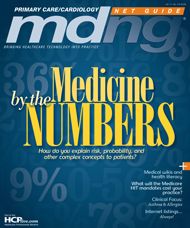Publication
Article
MDNG Primary Care
Automating the Documentation and Coding Process
Author(s):
Accurate documentation and coding is essential for efficient billing and reimbursement.
Accurate documentation and coding is essential for efficient billing and reimbursement. But many documentation systems require significant manual input, leading to cumbersome and inefficient processes. Truly automated information systems offer one possible solution.
According to CMS, procedure documentation supports 70-90% of physicians’ professional fees. It is also critical to ensuring proper reimbursement and regulatory compliance. Unfortunately, procedure documentation is also the top source of claims and coding problems and is responsible for a significant portion of payment errors.
The reason is simple: issues with documentation at the point of care impact the ability to code at appropriate levels on the financial back end. For cardiology practices, the situation is exacerbated by the highly complex documentation and coding environment.
A complex, error-prone process
Most procedure documentation “systems” are manual and largely paper-based. They depend upon physicians and technologists to properly dictate their notes, which must then be transcribed. Next, coders must apply the proper CPT and ICD codes and send the information to medical records and billing offices. Each step in this process increases the likelihood that the bill will be inaccurate. The problem is compounded by the complexity of documentation and coding for cardiology procedures.
Another issue arises when the codes submitted for professional services vary from those submitted by hospitals. The Office of the Inspector General reports that this happens with nearly one-fourth of all claims. At best, rejected bills require costly handling before resubmission. At worst, they can lead to revenue loss and even fines under the Fraud and Abuse Act.
Automating for accuracy and profitability
Automation can remove the inefficiencies and human errors that plague most documentation and coding processes, mitigate the risk of lost revenue, and speed the revenue cycle by eliminating the delays that occur due to missing or incomplete documentation. Automation can also reduce costs associated with transcription and chart storage, eliminate dictation/transcription delays, and streamline workflows.
Although there are a number of cardiology-specific information systems on the market, many do not automate physician documentation at the point of care, and those that do offer physician documentation modules that are often difficult to use. These systems also do not automate the coding process.
To close those gaps in workflow, a new breed of procedure documentation and coding software has emerged that uses content-driven menus that automatically adapt to information that the physician selects. Interactive software follows the logical flow of a procedure, presenting all relevant options that may impact clinical care or correct coding at each step and expanding selections into detailed procedure notes. Interfaces with monitoring systems automatically import hemodynamic data, medications, supplies used, and specific measurement information during catheterization procedures, and they can also export data for submission to the ACC.
The software then maps procedure content directly to billing codes, automatically generating correct CPT and ICD codes, as well as CCI edits and all appropriate modifiers. The end result is coder-ready, documentation-delivering compliance, proper reimbursement, and fewer days to drop a bill. Because the documentation supports the codes, and the facility and professional codes match, the software also provides added protection against RAC or other coding audits.
Rapid, significant ROI
The best news is that automating the documentation and coding process can result in a rapid return on investment. Between the cost savings generated by eliminating transcription and the revenue gains realized by capturing all charges to which a practice and facility are entitled, the typical payback for a cardiac documentation and coding software solution is 12-18 months. By automating procedure documentation and coding with a physician-friendly solution, both hospitals and cardiology practices can streamline the overall process and remove the weaknesses inherent in a manual system.
Sean Benson is co-founder and vice president, consulting, ProVation Medical.






